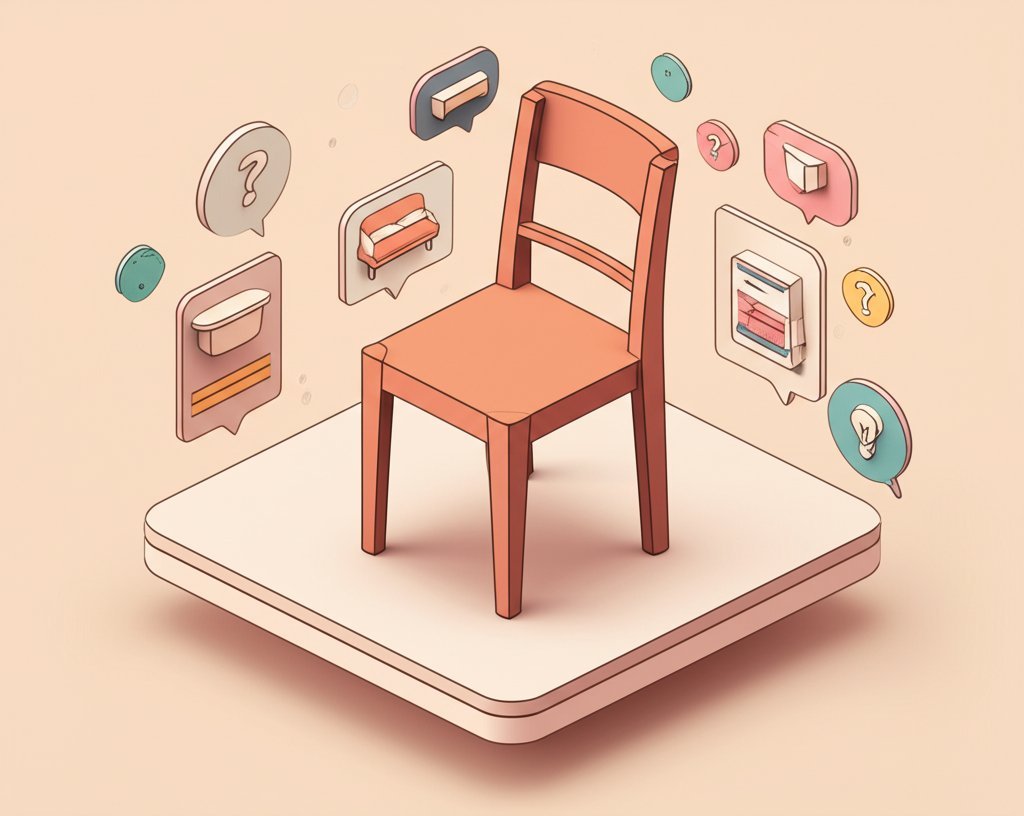Have you ever paused to consider the silent workhorse of your home and office? We’re talking about tables – those seemingly simple surfaces that host our meals, support our work, and gather our loved ones. But beneath their utilitarian veneer lies a treasure trove of history, innovation, and astonishing details. Get ready to embark on a fascinating journey as we uncover incredible facts about tables and dive into some truly fun facts about furniture that will forever change the way you view these indispensable pieces. From ancient civilizations to modern-day marvels, prepare to be amazed by the untold stories and surprising secrets of the humble table!
The Ancient Pedigree of Tables: From Practicality to Prestige
Tables have been pivotal in human civilization for millennia, evolving from basic elevated surfaces to symbols of status and cultural hubs. Their origins trace back to resourceful solutions for daily needs, shaping everything from communal dining to strategic game playing.
Egyptian Game Boards and Ritual Offerings
Long before dining as we know it, tables served diverse purposes. In ancient Egypt, rudimentary tables were essential for various activities. Archeological findings reveal flat stones and low wooden platforms that functioned not only as surfaces for holding food and tools but also as sophisticated game boards. Imagine pharaohs and commoners alike gathered around these early facts about tables, engaging in strategic games, making them central to entertainment. Furthermore, ceremonial tables were vital for religious practices, used to present offerings to deities, underscoring their sacred significance.
The Greek Revolution: Low-Lying Dining
The ancient Greeks pioneered the concept of tables as dedicated dining furniture. Unlike earlier civilizations, they established the practice of communal dining, where friends and family would recline on couches (klinai) around low, often rectangular, tables. These early dining tables were designed to accommodate the relaxed, semi-recumbent posture of Greek feasting, marking a significant cultural shift. This innovative approach to shared meals transformed social gatherings, making tables the central stage for conversation, philosophy, and celebration.
Roman Grandeur: The Triclinium Table
Following the Greek tradition, the Romans further refined communal dining with their elaborate triclinium setup. This typically involved three banqueting couches arranged in a U-shape around a central dining table. The term “triclinium” (from Greek “tri” meaning three and “kline” meaning couch) referred to the entire dining room, with the table at its heart. These Roman tables were often beautifully crafted, made from marble, bronze, or exotic woods, and adorned with intricate carvings, reflecting the host’s wealth and status. The triclinium table was not just for food; it was a focal point for social hierarchy and refined entertainment, showcasing another intriguing dimension of facts about tables.
Medieval Versatility: Trestle Tables on the Go
During the Middle Ages, furniture was often built for portability and function, especially in castles and large halls. Trestle tables became incredibly popular due to their versatility. Consisting of a long tabletop resting on detachable trestle supports, these tables could be easily assembled for banquets and feasts, then disassembled and stored away to free up space. This adaptability made them ideal for multi-purpose great halls, highlighting how practical needs drove the evolution of table design and provided essential fun facts about furniture about medieval living.
A World of Materials: The Table’s Canvas Through Time
The materials used to construct tables tell a story of technological advancement, artistic expression, and changing aesthetic preferences. From robust natural elements to sophisticated man-made compositions, each material imparts unique characteristics and a distinct visual appeal to these essential pieces of furniture.
The Enduring Charm of Wood: Craftsmanship and Legacy
Wood remains perhaps the most classic and cherished material for tables, prized for its warmth, natural beauty, and versatility. Early tables were predominantly made from readily available local timbers. Over centuries, master artisans developed intricate techniques like joinery, marquetry (inlay of different wood veneers to form patterns), and carving, transforming simple wooden boards into works of art. From sturdy oak and elegant walnut to rich mahogany and exotic teak, the choice of wood often dictated the table’s style, durability, and perceived value. Many antique tables are revered as heirlooms, a testament to wood’s lasting appeal and the craftsmanship of earlier generations.
Strength and Shine: Metals in Table Design
While wood dominated for centuries, metals gradually found their place in table construction, particularly as supports and decorative elements. Bronze and iron were used in ancient times for religious and ceremonial tables. In more recent history, metals like wrought iron, steel, and aluminum have become popular, especially for outdoor furniture and industrial or modern interior designs. Wrought iron offers ornate, handcrafted beauty, while sleek stainless steel and polished aluminum bring a contemporary, minimalist aesthetic. These materials provide exceptional durability and allow for thinner, more elegant profiles, showcasing the adaptability in facts about tables design.
Transparent Elegance: The Rise of Glass Tables
Glass tables, with their distinct elegance and sense of openness, gained significant popularity in the 20th century. The advent of tempered glass made tabletops safer and more resilient, allowing designers to experiment with transparency and light. Glass can make a room feel larger and brighter by allowing light to pass through, and it beautifully complements various bases, from intricate metalwork to minimalist wood. The visual lightness of a glass table can create stunning contrasts, making it a favorite for modern and luxurious settings, adding a touch of sophisticated flair to fun facts about furniture.
Modern Marvels: Stone, Resin, and Beyond
Today, the materials used for tables are more diverse than ever. Natural stones like marble, granite, and slate offer unparalleled luxury, durability, and unique patterns, making each table a singular piece of art. Composite materials like concrete and engineered quartz provide robust, contemporary surfaces. The advent of resin has opened up a new world of creative possibilities, allowing for encapsulated objects, vibrant colors, and unique textures, often mimicking natural forms. Sustainable materials, including recycled plastics and bamboo, are also gaining traction, reflecting an increasing awareness of environmental impact in furniture design. This ongoing innovation ensures that facts about tables continues to evolve.
Beyond the Flat Top: Diverse Forms and Functions of Tables
The evolution of tables isn’t just about materials; it’s profoundly about their diverse forms and the specialized functions they serve. From maximizing space in compact living areas to providing dedicated platforms for work or play, tables have been ingeniously designed to meet virtually every human need.
Space-Saving Ingenuity: Gateleg, Drop-Leaf, and Console Tables
For centuries, designers have tackled the challenge of limited space, leading to clever, multi-functional table designs.
While the Greeks favored low dining surfaces, the evolution of table design certainly hasn’t stopped there, and you might even be interested to learn about the challenges designers face in creating more unusual pieces, like a conversation piece that’s also an awkward bulwark in room.
fun facts about furniture that highlight practicality.Dedicated Designs: Desks, Coffee Tables, and Card Tables
Many table types are defined by their specific purpose:
facts about tables showcase human ingenuity.The Weight of Play: Billiards and Gaming Tables
Some tables are built for serious play and leisure, demanding specific structural requirements:
Transformer Tables: The Future of Flexible Living
As living spaces shrink and multi-functional furniture becomes a necessity, “transformer tables” represent the cutting edge of table design. These ingenious pieces can change their size, height, or even purpose with simple mechanisms. A coffee table might extend and lift to become a dining table, or a narrow console table could expand to seat six. This innovative category of facts about tables is perfect for urban living, combining several furniture functions into one smart, adaptable unit.
Cultural Icons and Lingual Legacies: Deep Dive into Table Lore

Tables are more than just objects; they are deeply woven into human culture, history, and language, holding symbolic weight and inspiring countless stories and expressions.
King Arthur’s Round Table: A Symbol of Equality
Perhaps the most famous table in legend is King Arthur’s Round Table. Unlike rectangular or hierarchical tables, a round table has no “head” or “foot,” signifying that all seated knights were equal in status. This legendary artifact embodies ideals of chivalry, democracy, and fellowship, making it a powerful cultural icon. The facts about tables that convey symbolic meaning are often the most profound.
The Etymology of “Table”: A Journey from “Tabula”
Have you ever wondered about the linguistic roots of the word “table”? Its origin traces back to the Latin word “tabula,” which meant a “board, plank, flat surface.” This simple etymology beautifully encapsulates the fundamental concept of a table – a flat top supported by legs. Over time, “tabula” evolved through Old French (table) into the English word we use today, carrying with it centuries of history and reminding us of the enduring connection between language and our material culture. This is a brilliant fun fact about furniture for word enthusiasts.
“Turning the Tables”: Idioms and Their Origins
Tables have given rise to numerous common idioms, reflecting their pervasive presence in our lives. “Turning the tables” means to reverse a situation, especially moving from a position of disadvantage to advantage. This idiom likely originates from board games or card games, where changing seating positions or control of the game board could shift the outcome. Other phrases like “table a motion” (to postpone discussion) or “table stakes” (the minimum amount of money required to play a game) further demonstrate how deeply tables are embedded in our language and daily interactions, making for fascinating facts about tables beyond their physical form.
Tables in Art, Literature, and History: The Resolute Desk
Tables have been silent witnesses to pivotal moments in history and frequently appear in art and literature, often imbued with symbolic meaning. A prime example is the Resolute Desk, a magnificent partners’ desk in the Oval Office of the White House. This desk was crafted from the timbers of HMS Resolute, a British Arctic exploration ship found abandoned and later returned to England by the United States. Queen Victoria had two desks made from the ship’s wood, presenting one to President Rutherford B. Hayes in 1880 as a gesture of goodwill. The Resolute Desk has been used by nearly every U.S. President since, embodying a legacy of statesmanship and international relations. This powerful example underscores the historical significance found within fun facts about furniture.
Truly Fun Facts About Furniture: Uncovering Quirks and Innovations

Beyond their historical significance and practical applications, furniture pieces, especially tables, hold a wealth of surprising and sometimes quirky stories. These fun facts about furniture highlight human ingenuity, unusual cultural norms, and the unexpected origins of everyday items.
Darwin’s Desk: The Birth of the Office Chair
One of the most surprising fun facts about furniture involves none other than Charles Darwin. The renowned naturalist, always seeking efficiency, reportedly attached wheels to his armchair to move more easily around his study, accessing his specimens quicker. This ingenious modification is widely credited as the precursor to the modern wheeled office chair, a design innovation born from a desire for greater productivity and convenience.
Before Chairs: Benches, Stools, and Cushions
While chairs are ubiquitous today, they were not always the primary form of seating. For much of history, particularly before the 16th century, people commonly sat on benches, stools, or even cushions on the floor. Chairs, especially those with backs, were often reserved for individuals of high status, reflecting social hierarchy. Ancient Roman banquets, for instance, involved reclining on couches around tables, not sitting on chairs. This shift in common seating practices is a fascinating fun fact about furniture.
IKEA’s Eureka Moment: The Flat-Pack Table
The global furniture giant IKEA popularized flat-pack, self-assembly furniture, but its origin is wonderfully simple. In the 1950s, IKEA employee Gillis Lundgren struggled to fit a table into his car. His solution? He removed the legs, effectively creating the first flat-pack table. He shared the idea with Ingvar Kamprad, IKEA’s founder, who immediately recognized the cost-saving and logistical benefits. This moment of practical problem-solving revolutionized furniture retail, making it a compelling fun fact about furniture about modern design.
The Credenza’s Secret Past: Poison Testing
The credenza, a versatile piece of furniture often used as a sideboard or storage cabinet, has a truly intriguing history. Its name is derived from the Italian word “credenza,” meaning “belief” or “trust.” In 16th-century Italy, a “credenza” was initially the act of a servant taste-testing food and drink for poison before presenting them to a noble or important person. This act, performed to build trust, eventually lent its name to the room where it took place, and then to the specific piece of furniture used to hold the food and drink designated for this testing. This little known origin story makes for one of the more unique facts about tables (or rather, the furniture often used with tables).
The Sofa’s Social Statistics
While our focus today is primarily on tables, it’s worth noting some broader fun facts about furniture that highlight their social role. Sofas, for example, are estimated to host an average of 782 visitors over their lifespan. They are silent witnesses to countless family gatherings, movie nights, heart-to-heart conversations, and moments of relaxation, truly cementing their place as central hubs in our homes.
The Most Expensive Table Ever Sold: The Dragon’s Desk
While exact figures fluctuate and private sales are hard to verify, one of the most famous and expensive tables ever sold at auction is the “Dragon’s Desk” by Eileen Gray. This extraordinary lacquered wood and leather table, designed between 1917 and 1919, fetched nearly €22 million (approximately $28 million USD) at a Christie’s auction in 2009. Originally owned by fashion designer Yves Saint Laurent, its intricate design and unparalleled provenance make it a legendary piece, showcasing the peak of artistic craftsmanship and collectibility in facts about tables.
Miniature Marvels: Dollhouse Furniture and Ancient Models
Human fascination with tables extends even to the miniature. Dollhouse furniture, meticulously crafted at various scales, has captivated children and collectors for centuries, replicating real-world tables in exquisite detail. But even ancient civilizations created miniature furniture. Archeologists have uncovered tiny clay or wood models of tables and other furnishings in ancient tombs, believed to represent the deceased’s possessions for the afterlife, providing early fun facts about furniture about symbolic representation.
Conclusion: Appreciate the Unsung Hero of Your Home
From rudimentary slabs in ancient Egypt to smart, transforming marvels of modern design, tables have consistently adapted, innovated, and remained indispensable. They are more than just surfaces; they are silent witnesses to our history, cultural evolution, and daily lives. We’ve explored the rich heritage, diverse materials, and fascinating functions that make up the incredible facts about tables. We’ve also uncovered delightful fun facts about furniture that highlight human ingenuity and unexpected stories.
So, the next time you gather around a dining table, work at a desk, or enjoy a cup of coffee on your low-lying surface, take a moment. Pause and appreciate the deep legacy and remarkable versatility of this truly humble yet extraordinary piece of furniture. Its story is far from over, and its magic continues to unfold in every home, office, and social setting across the globe.
FAQ
Q: What were the earliest forms of tables used for?
A: In ancient times, tables served diverse purposes beyond just dining. Egyptians used them for playing games and ritual offerings, while the Chinese utilized them for creating intricate artwork. The Greeks were among the first to establish tables specifically for communal dining.
Q: How did ancient Greek dining tables differ from modern ones?
A: Ancient Greek dining tables were typically low and designed to accommodate people reclining on couches (klinai) around them, reflecting their tradition of leaning while enjoying meals together.
Q: What is the origin of the word “table”?
A: The word “table” originates from the Latin word “tabula,” which means “board” or “flat top piece.” This highlights the fundamental design of a table as a flat surface supported by a base.
Q: What are some innovative, space-saving table designs?
A: Innovative space-saving table designs include gateleg tables (with hinged leaves supported by swinging legs), drop-leaf tables (where leaves fold down), and console tables (narrow tables placed against walls). Transformer tables that can change size or function are also cutting-edge.
Q: Can you give a fun fact about the origin of flat-pack furniture?
A: A fun fact is that the concept of flat-pack furniture, popularized by IKEA, originated in the 1950s when IKEA employee Gillis Lundgren removed the legs of a table to fit it into his car, leading to the idea of selling furniture in easily transportable, self-assembly components.
Q: What is the Resolute Desk and why is it famous?
A: The Resolute Desk is a historic partners’ desk in the Oval Office of the White House. It’s famous because it was crafted from the timbers of a salvaged British Arctic exploration ship, HMS Resolute, and presented to the U.S. President by Queen Victoria as a gift of goodwill. It has been used by many U.S. Presidents.










